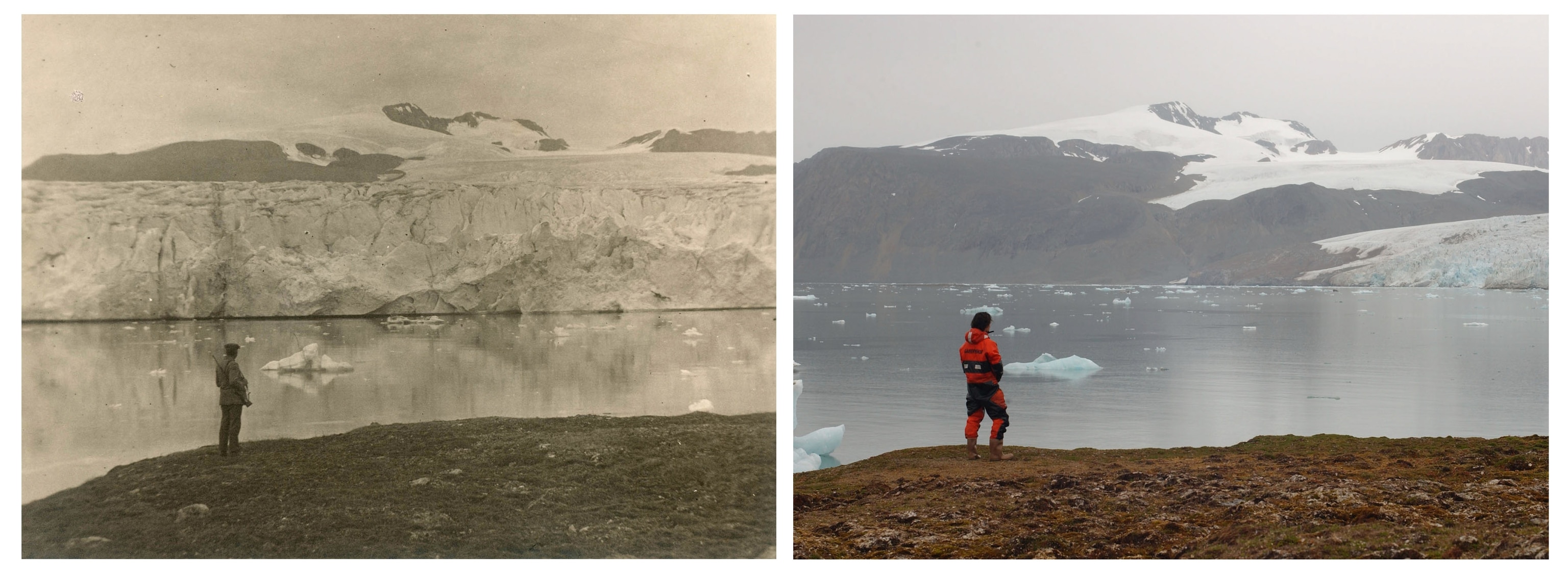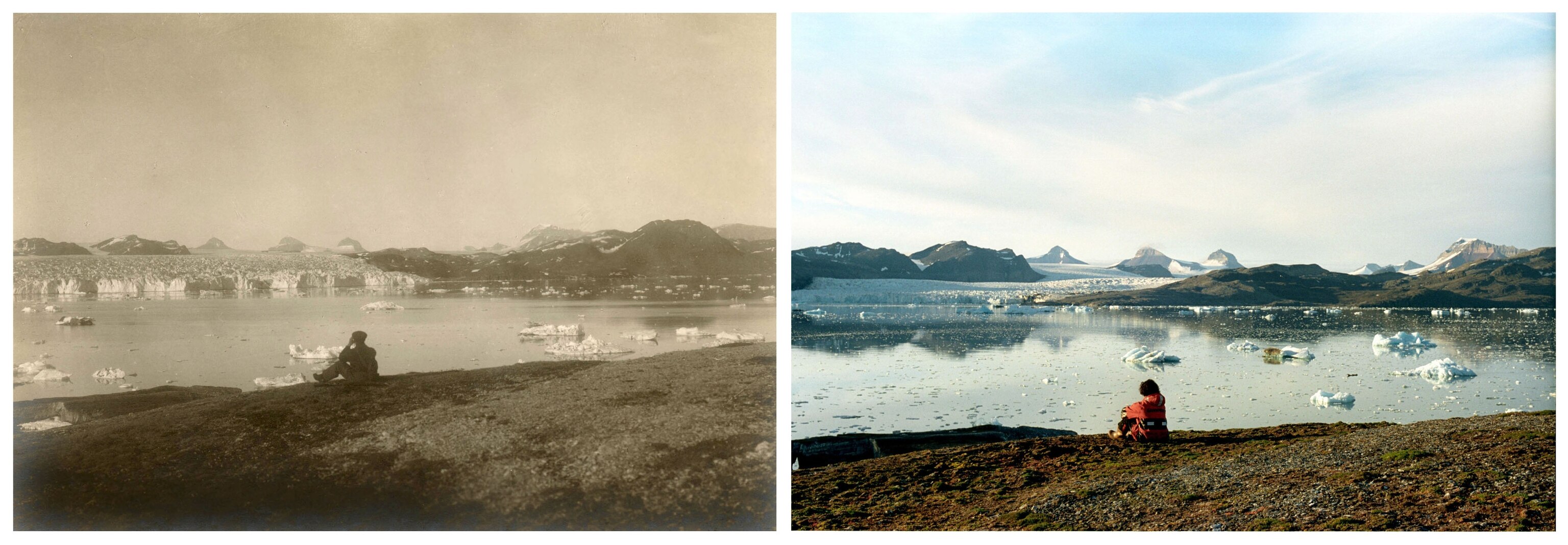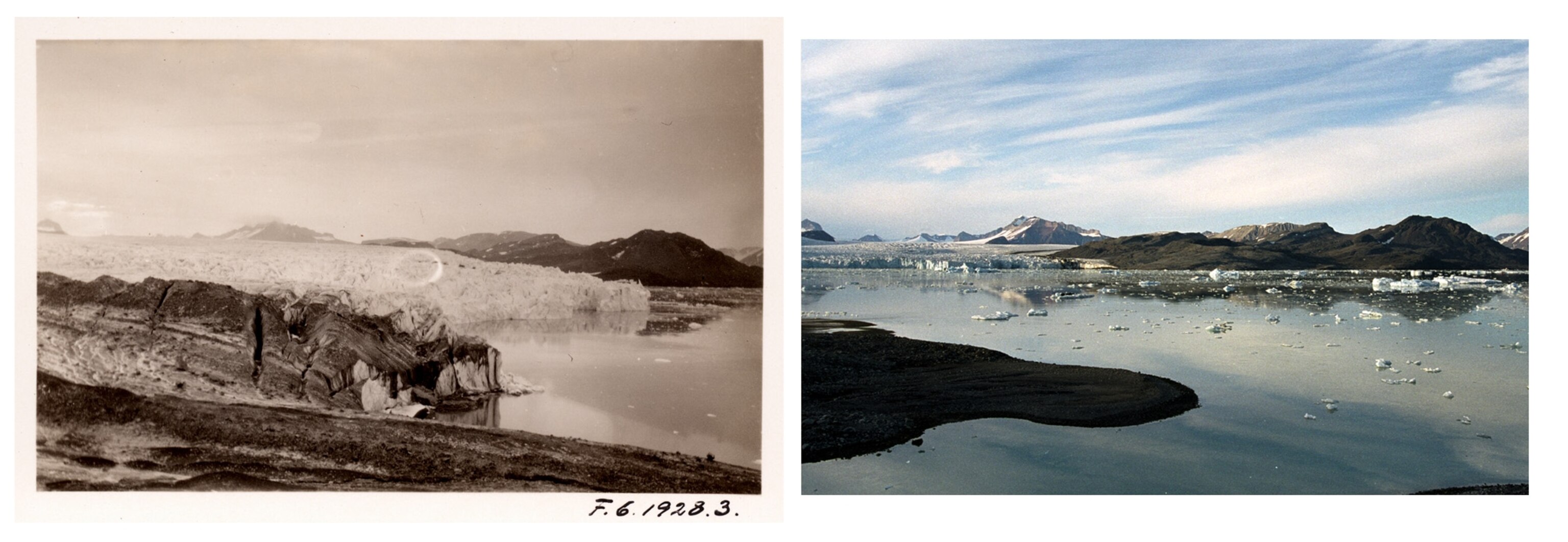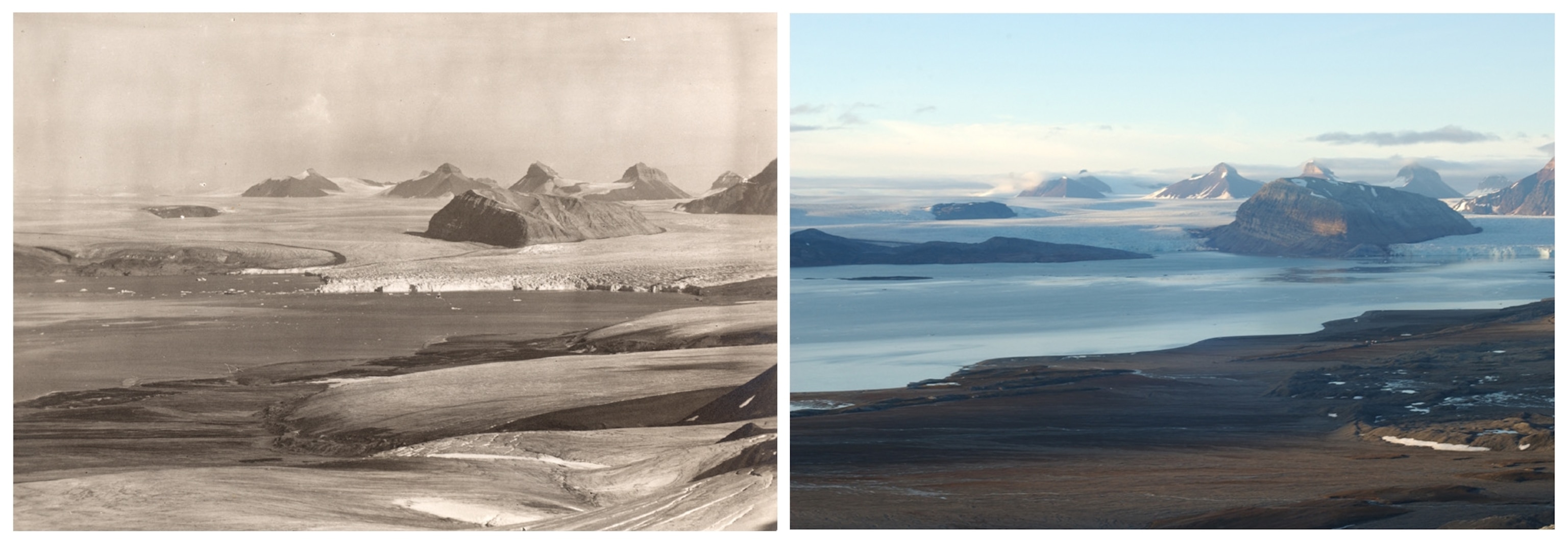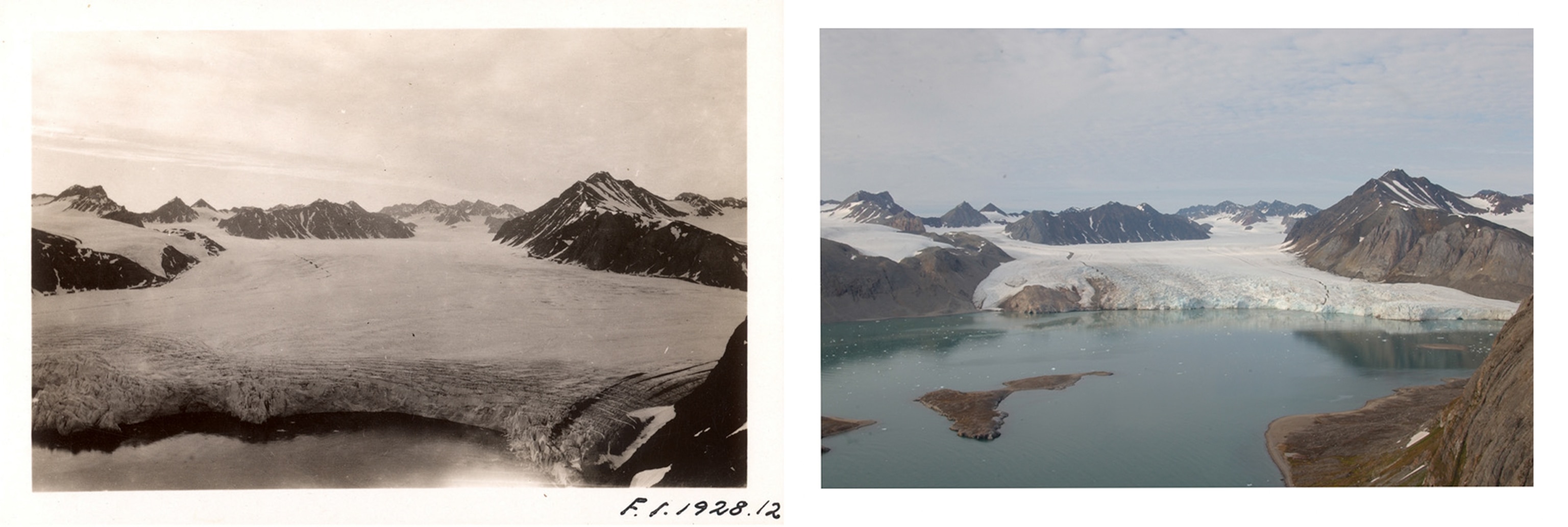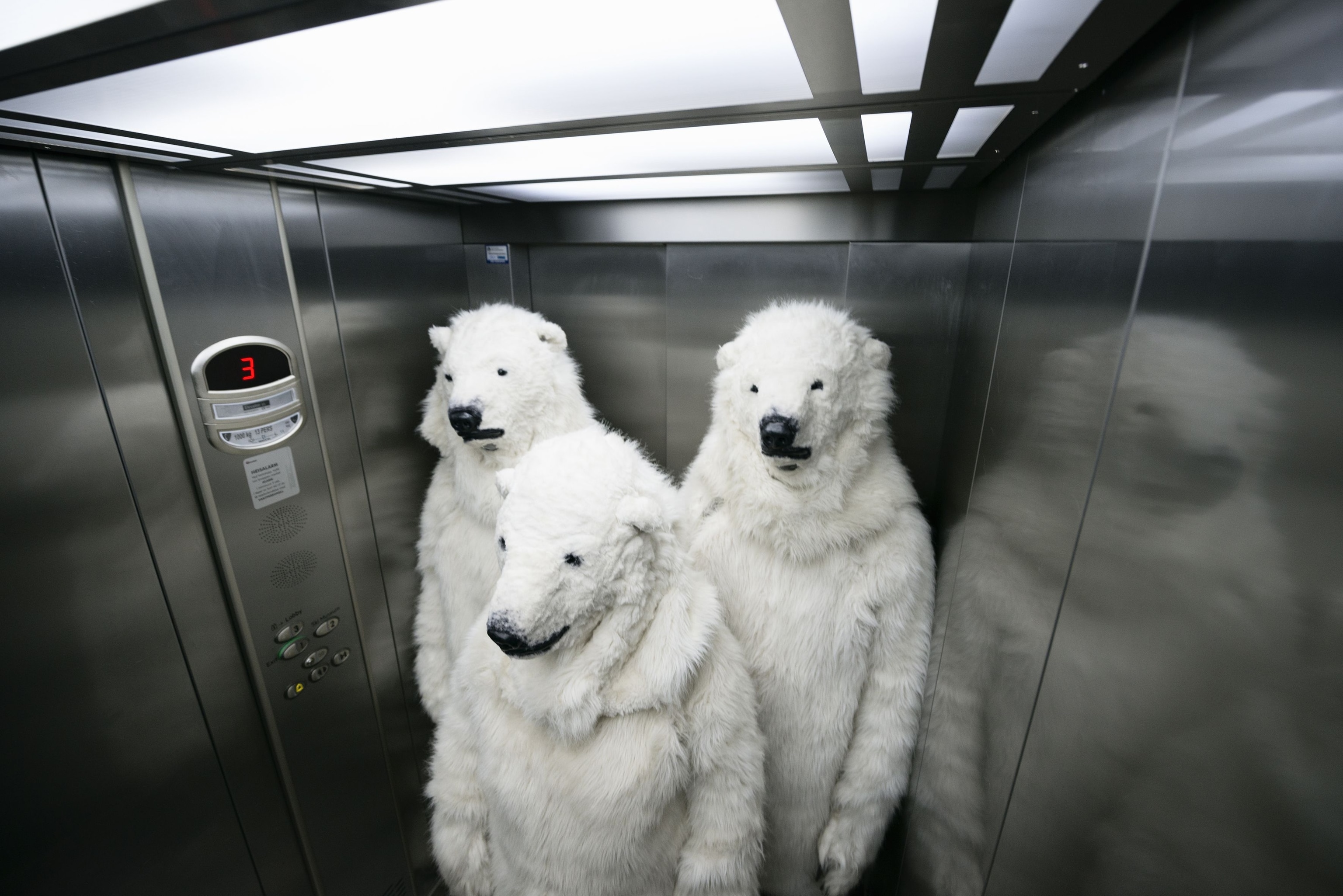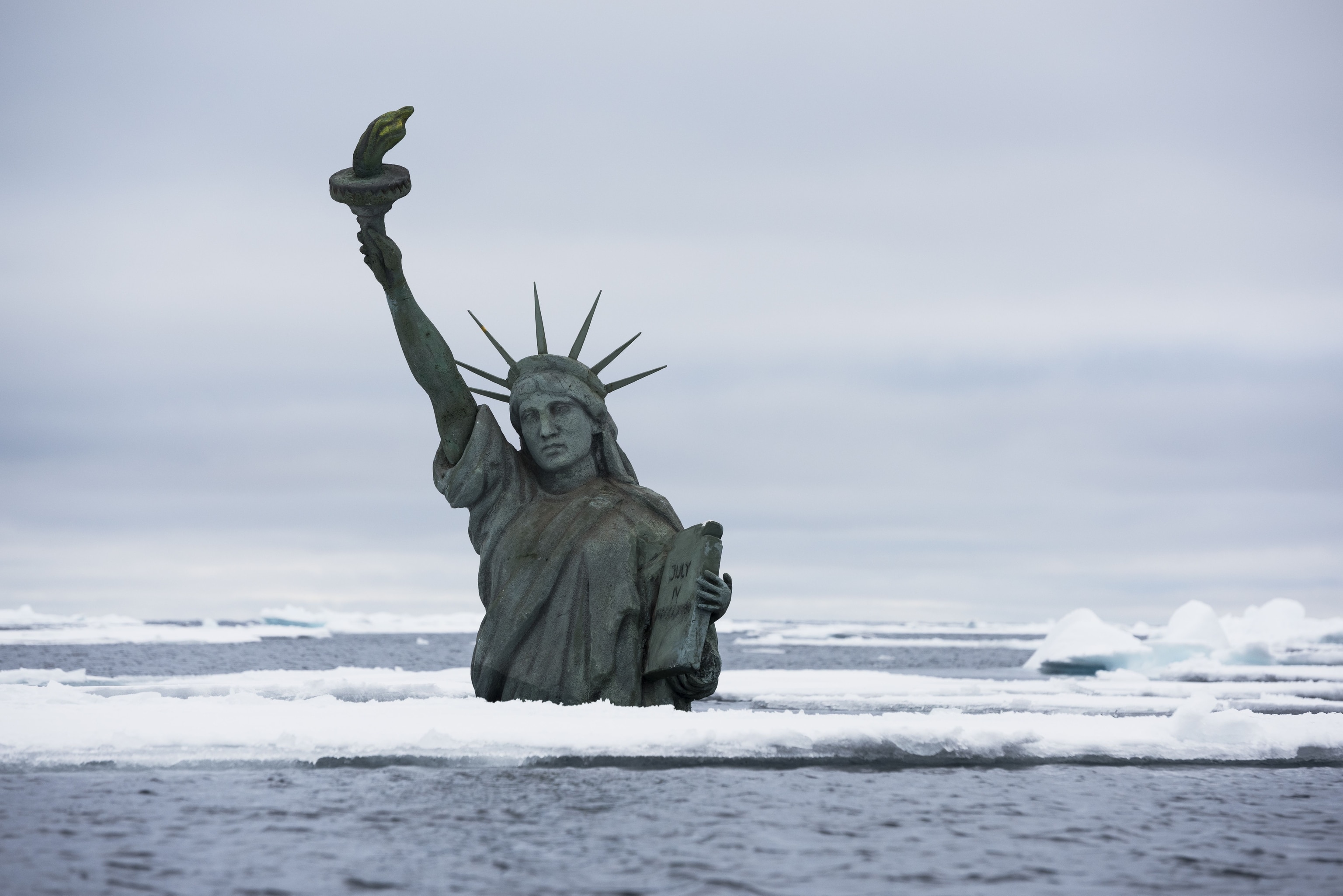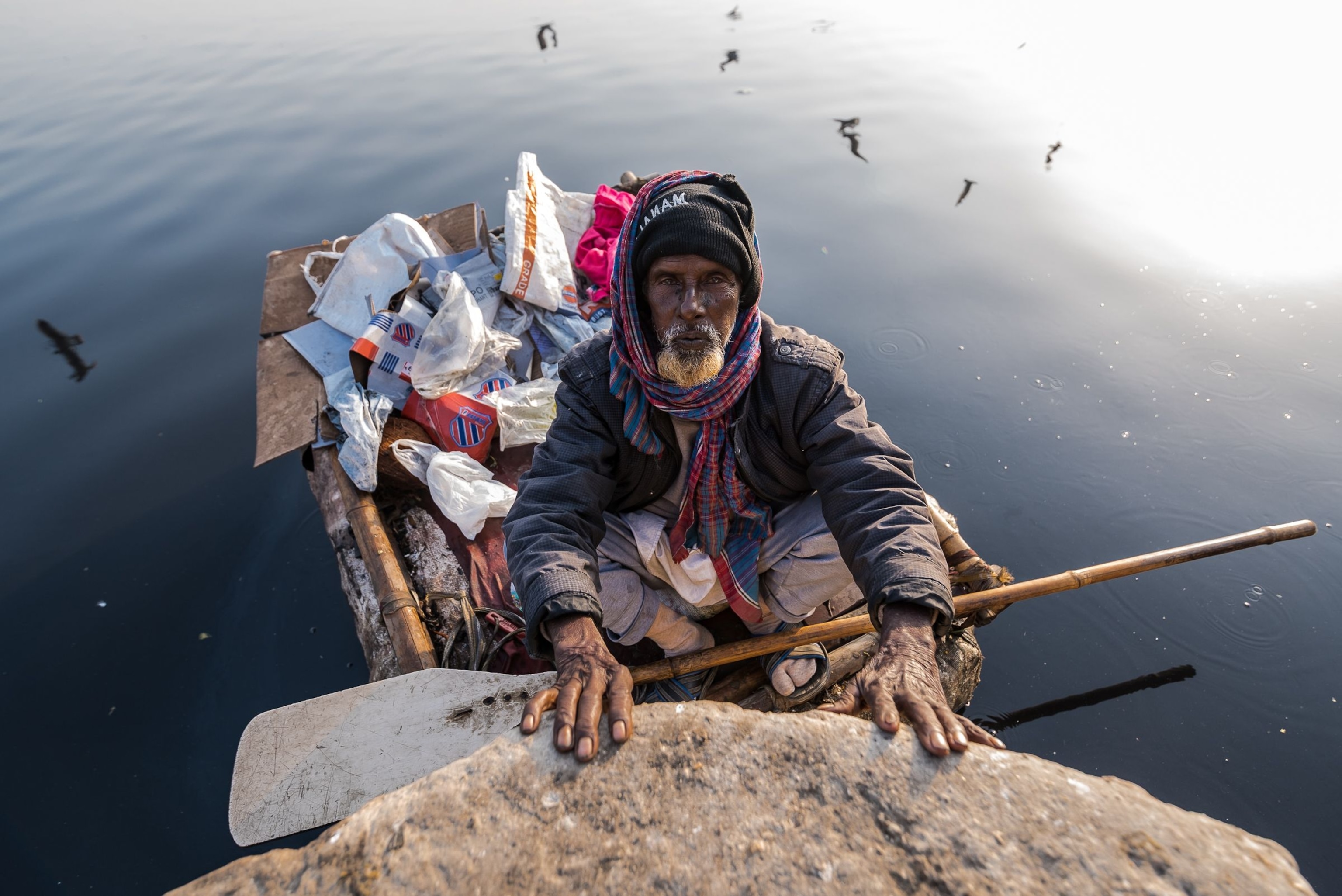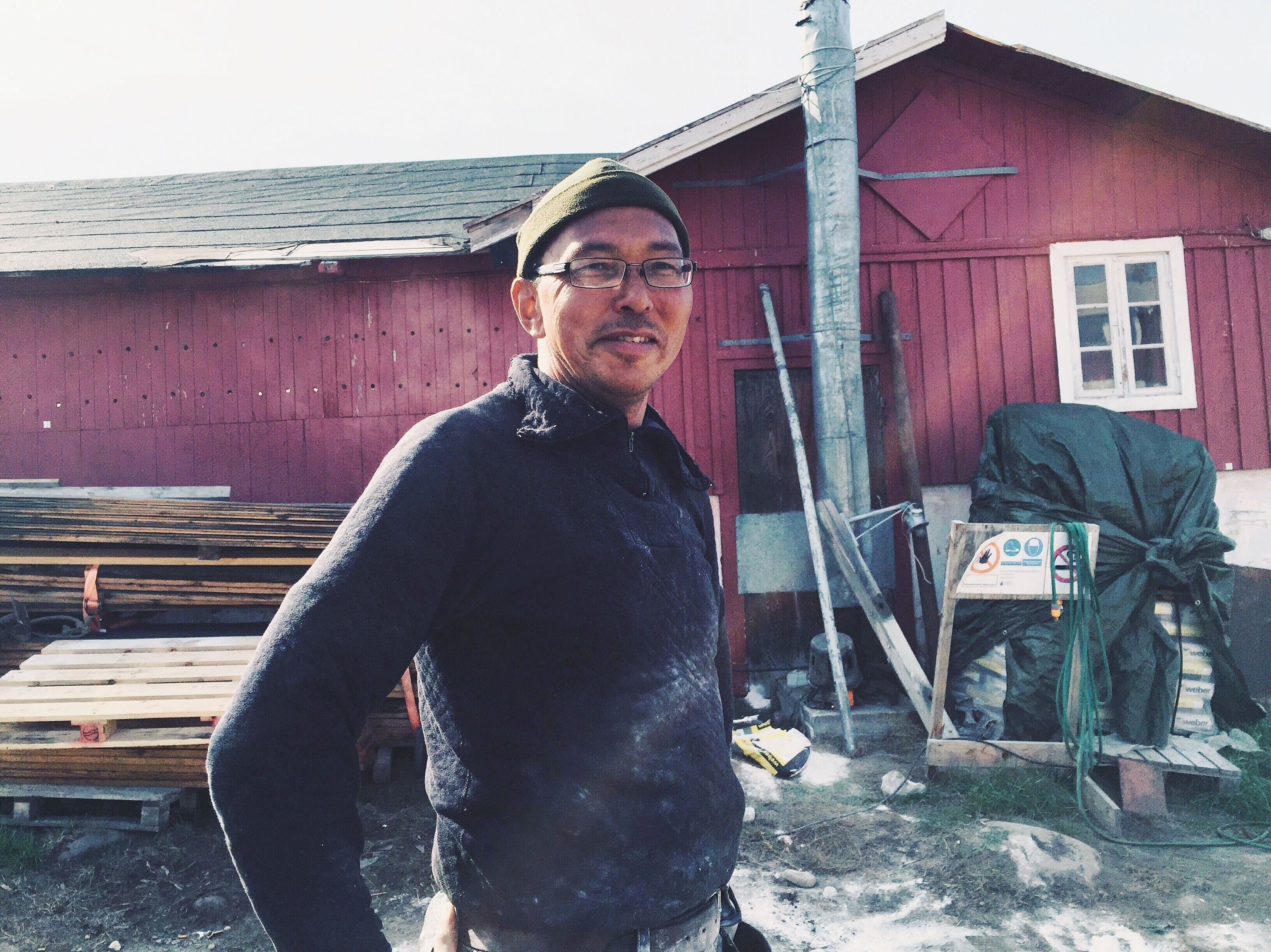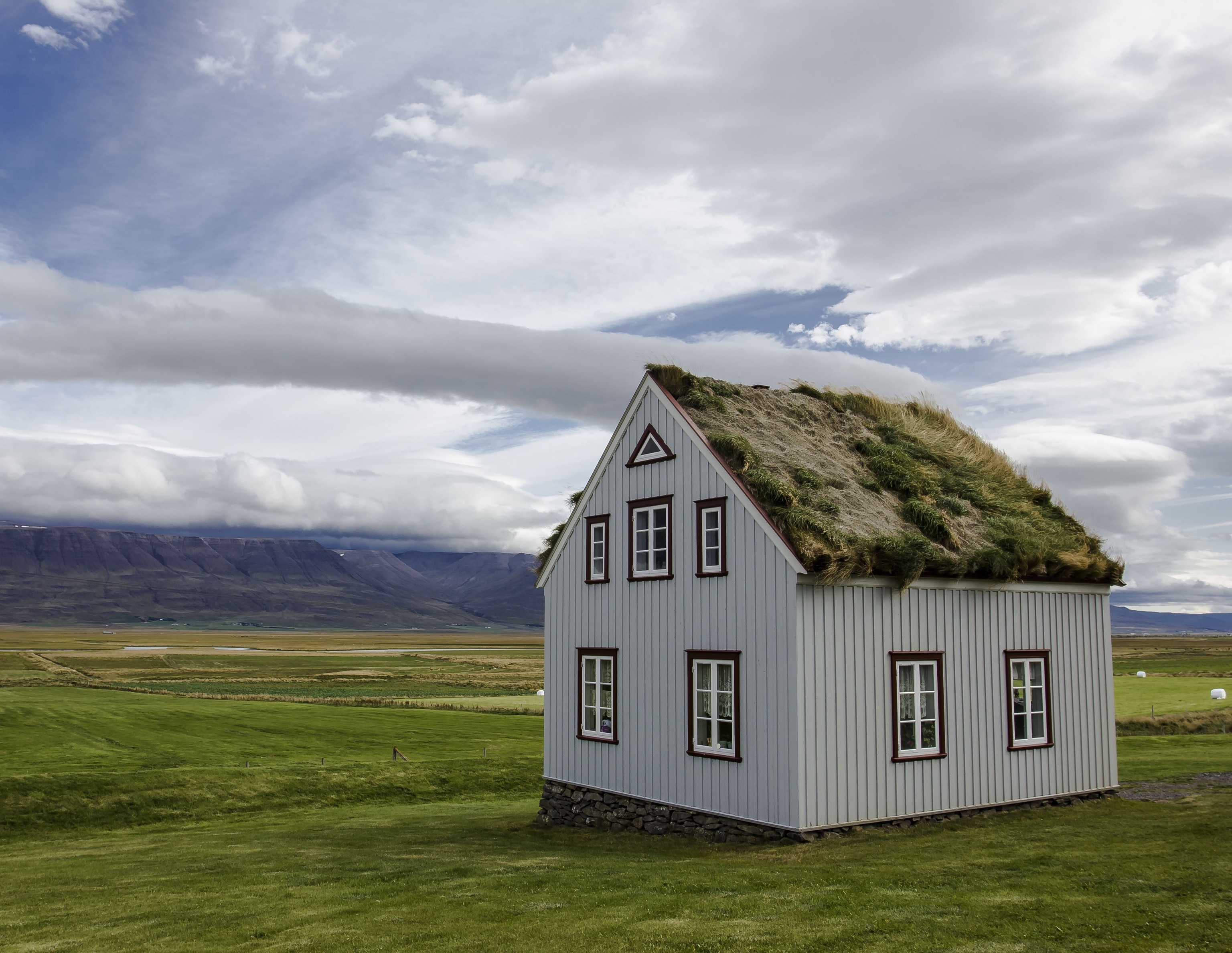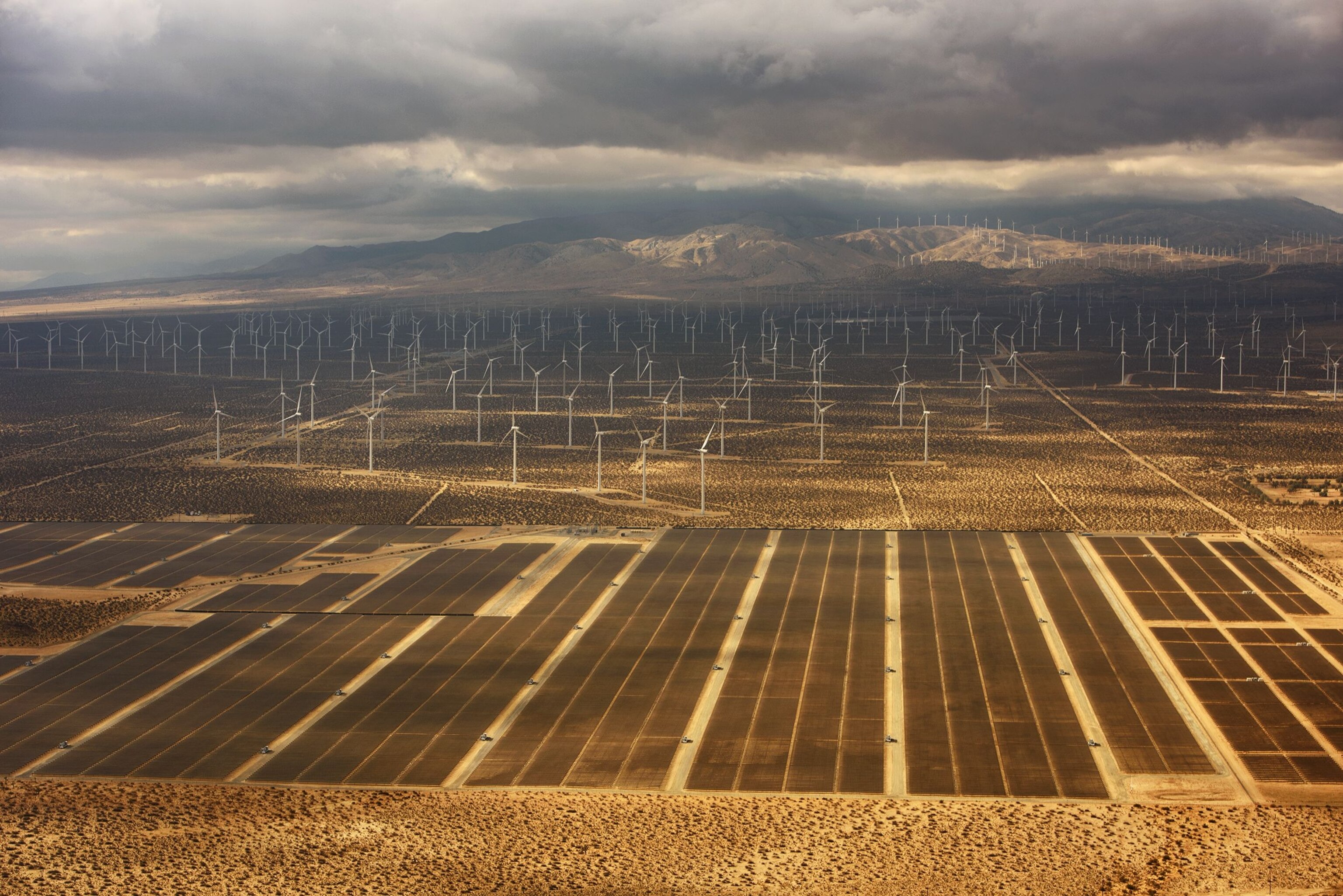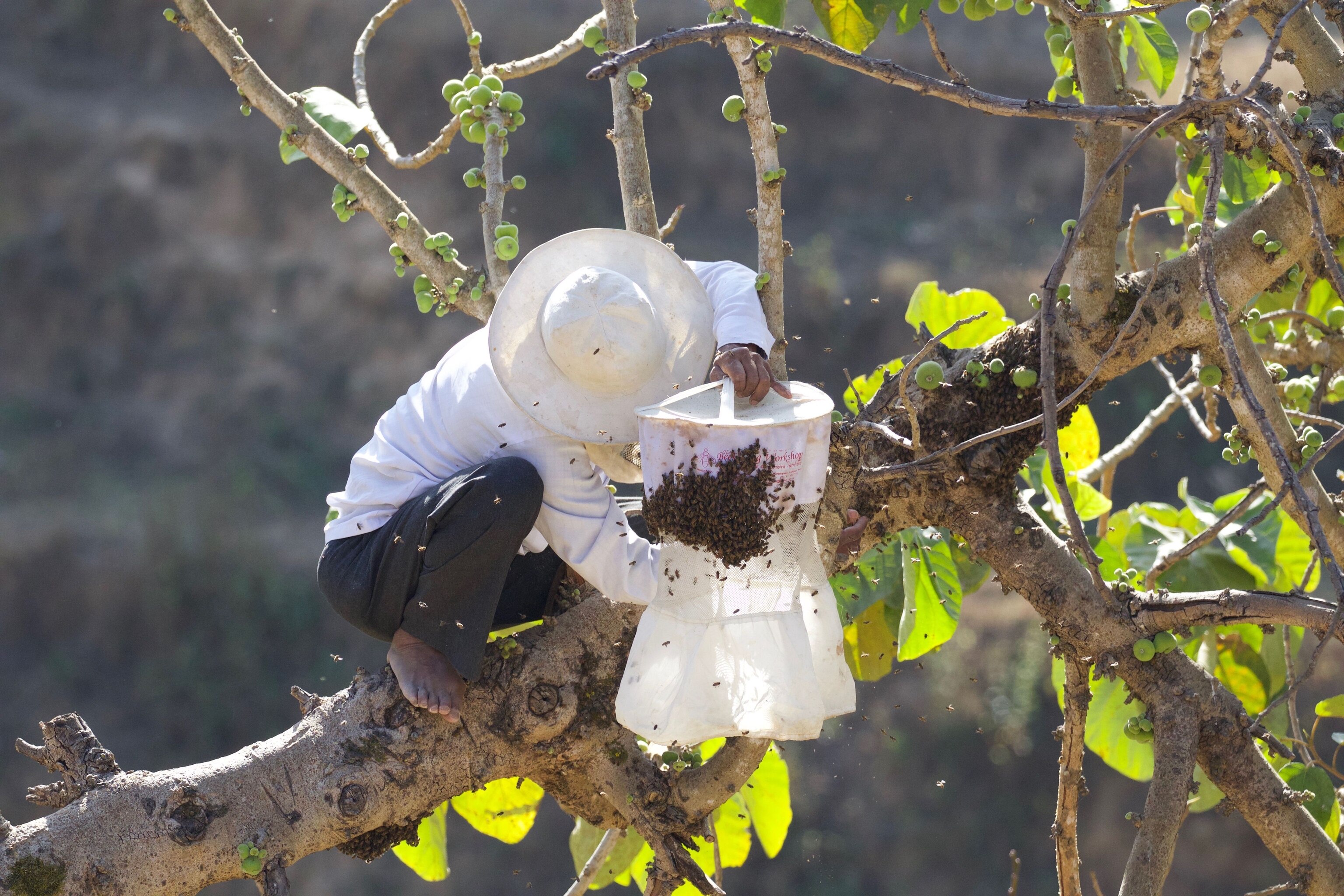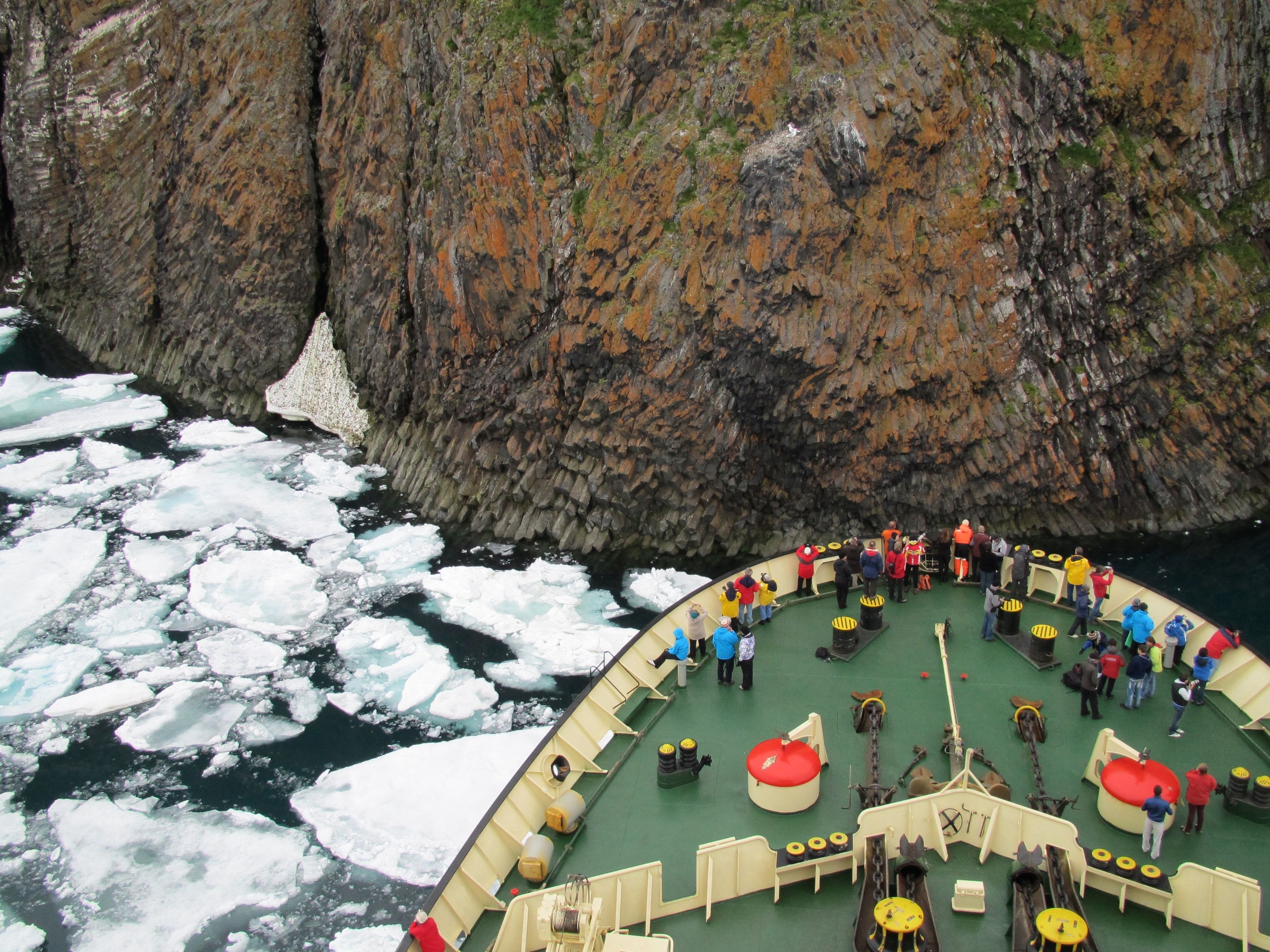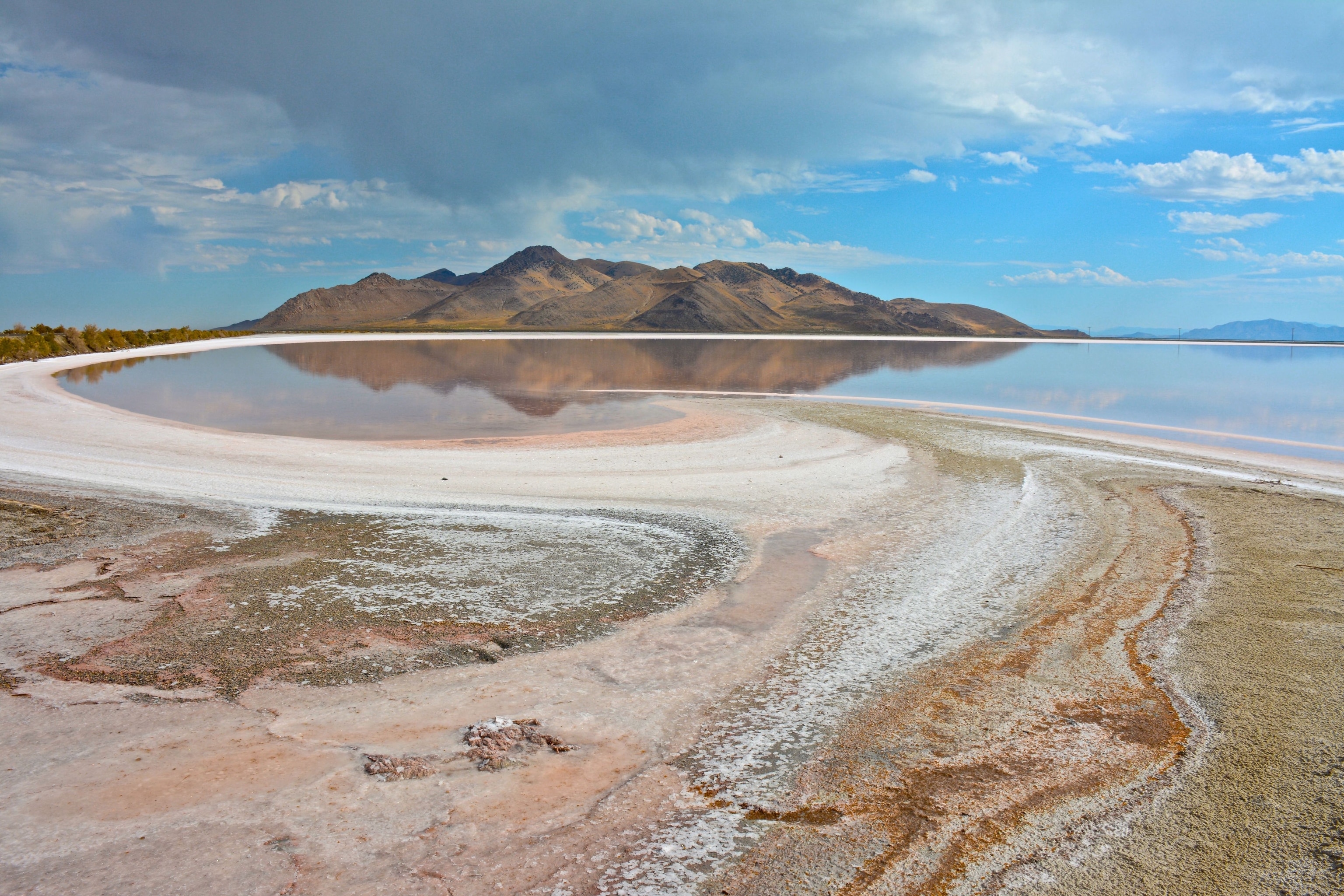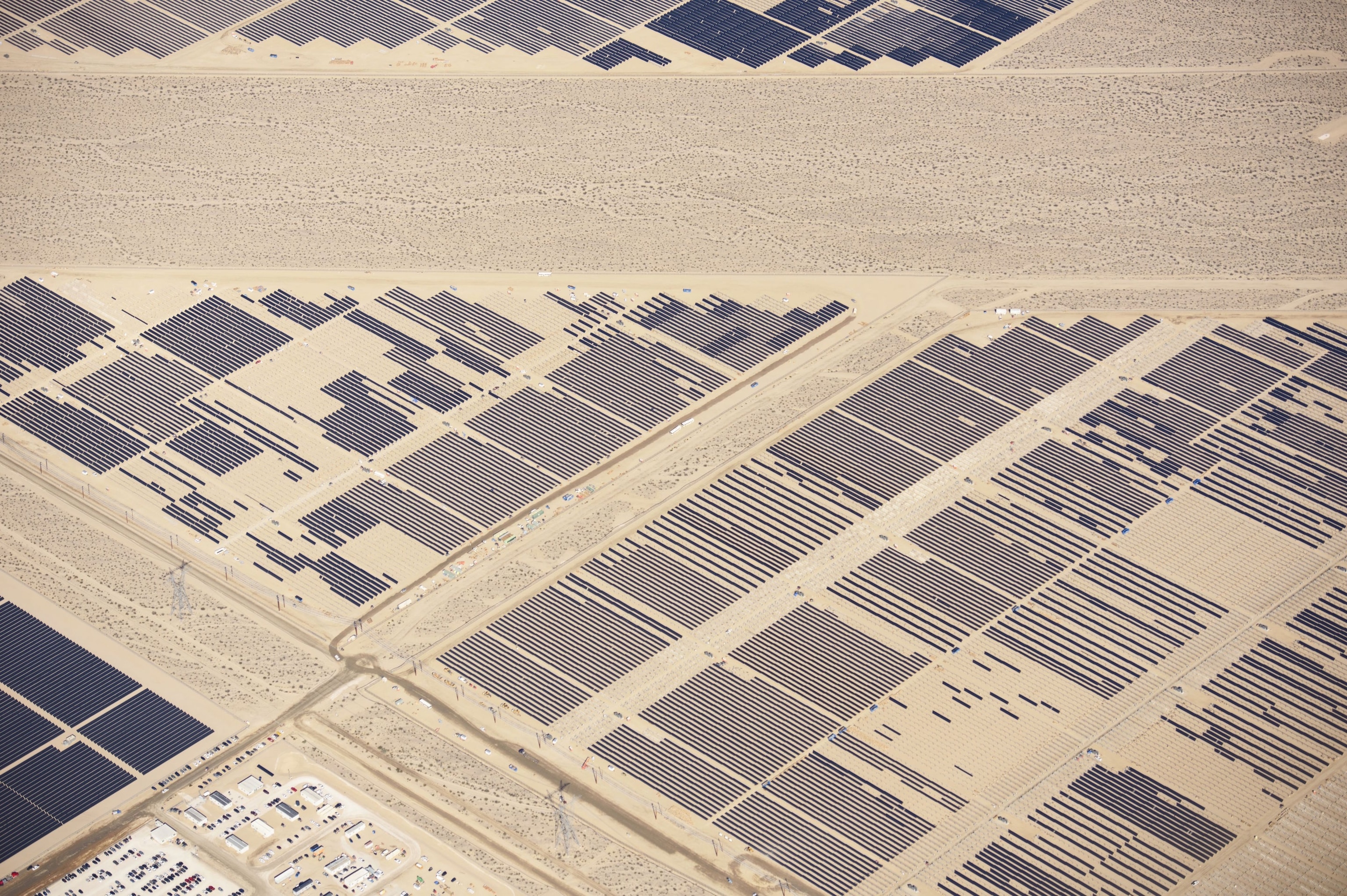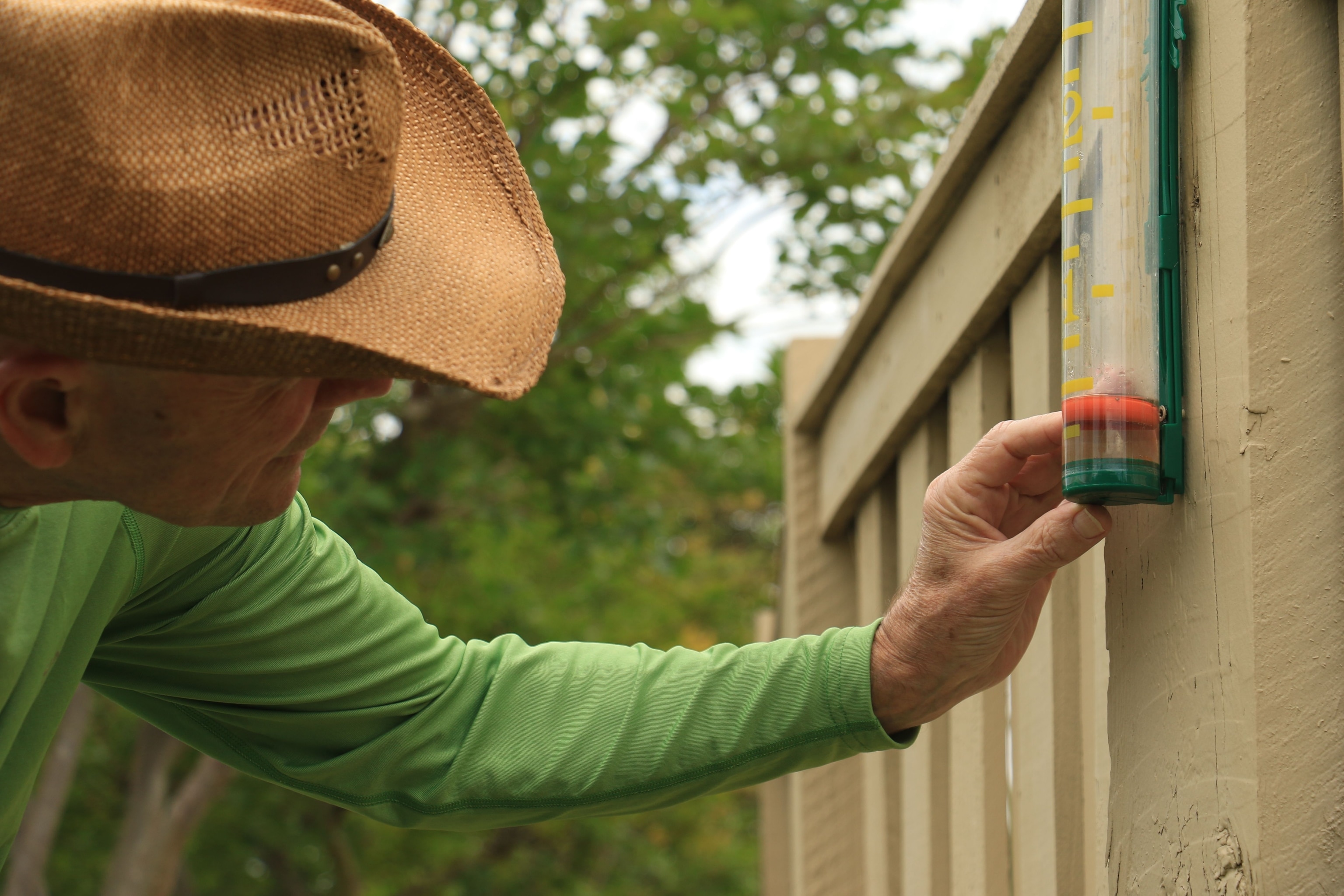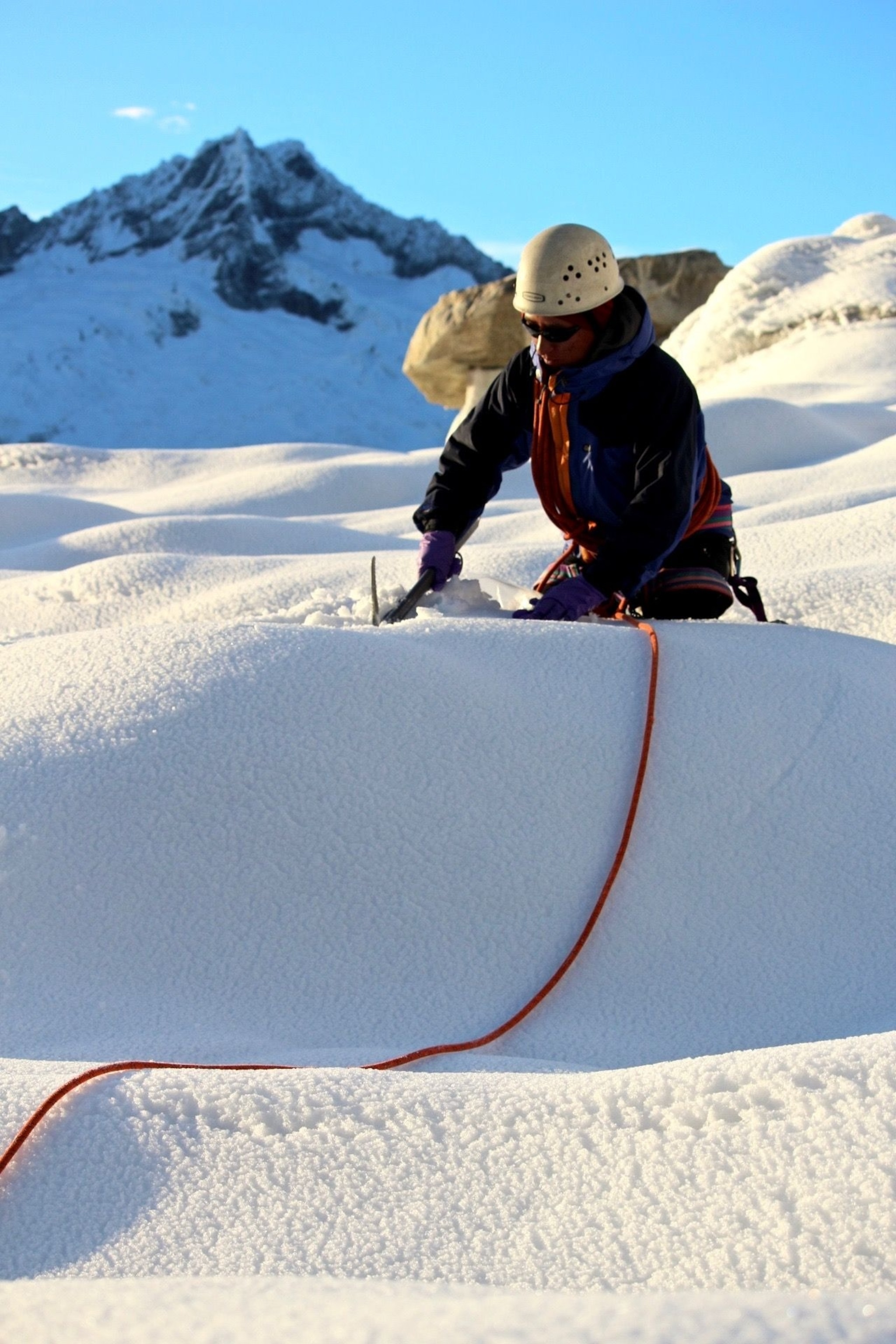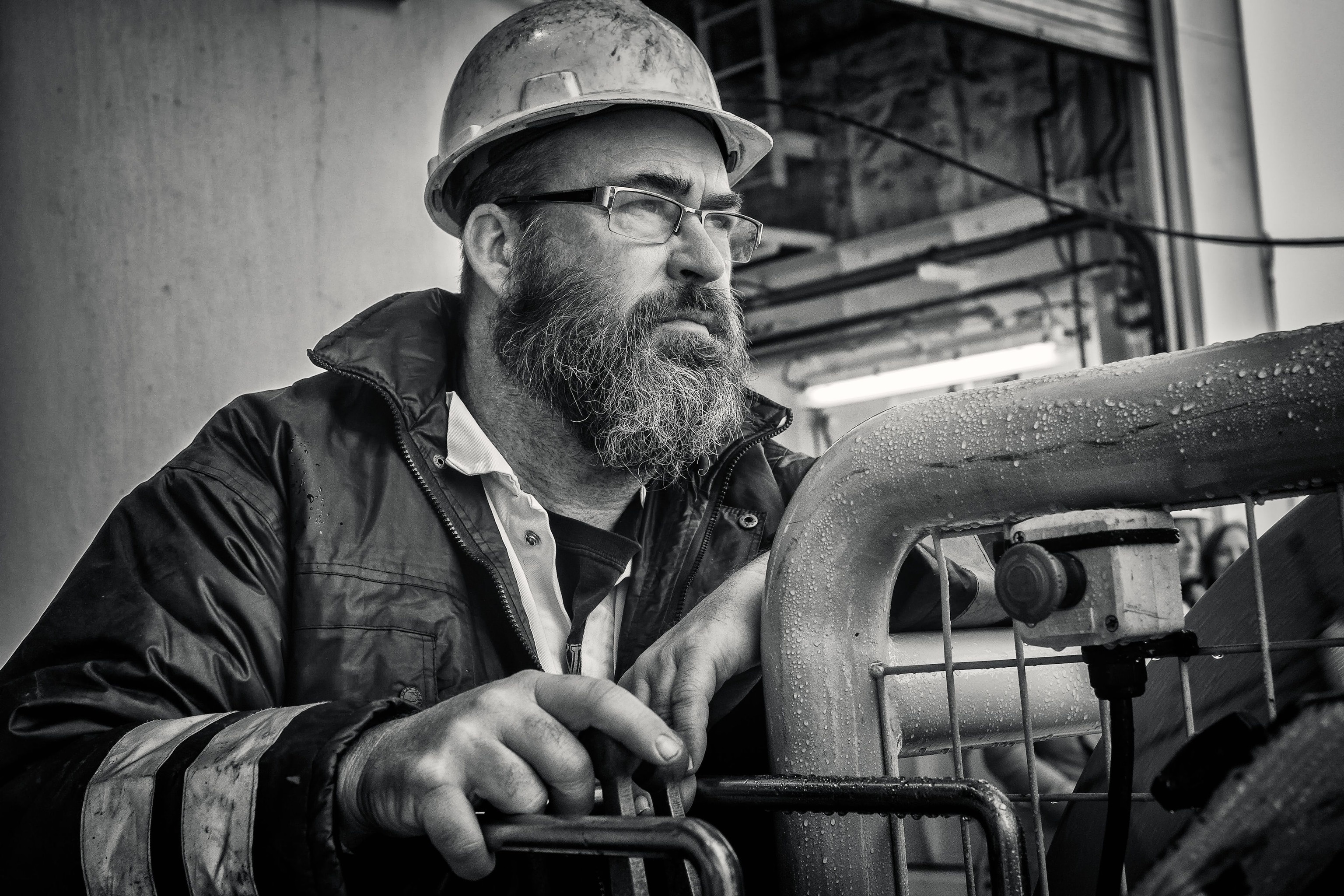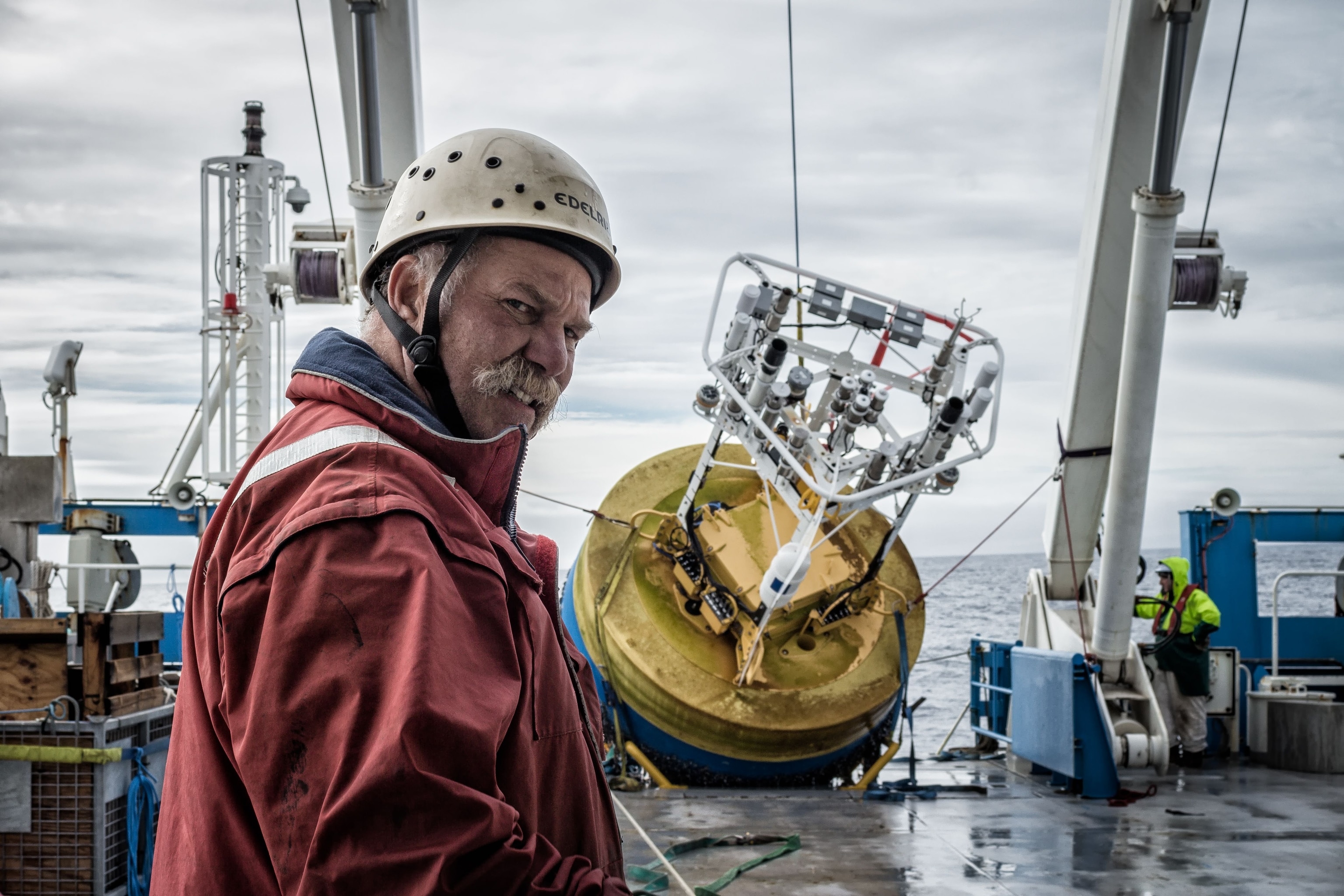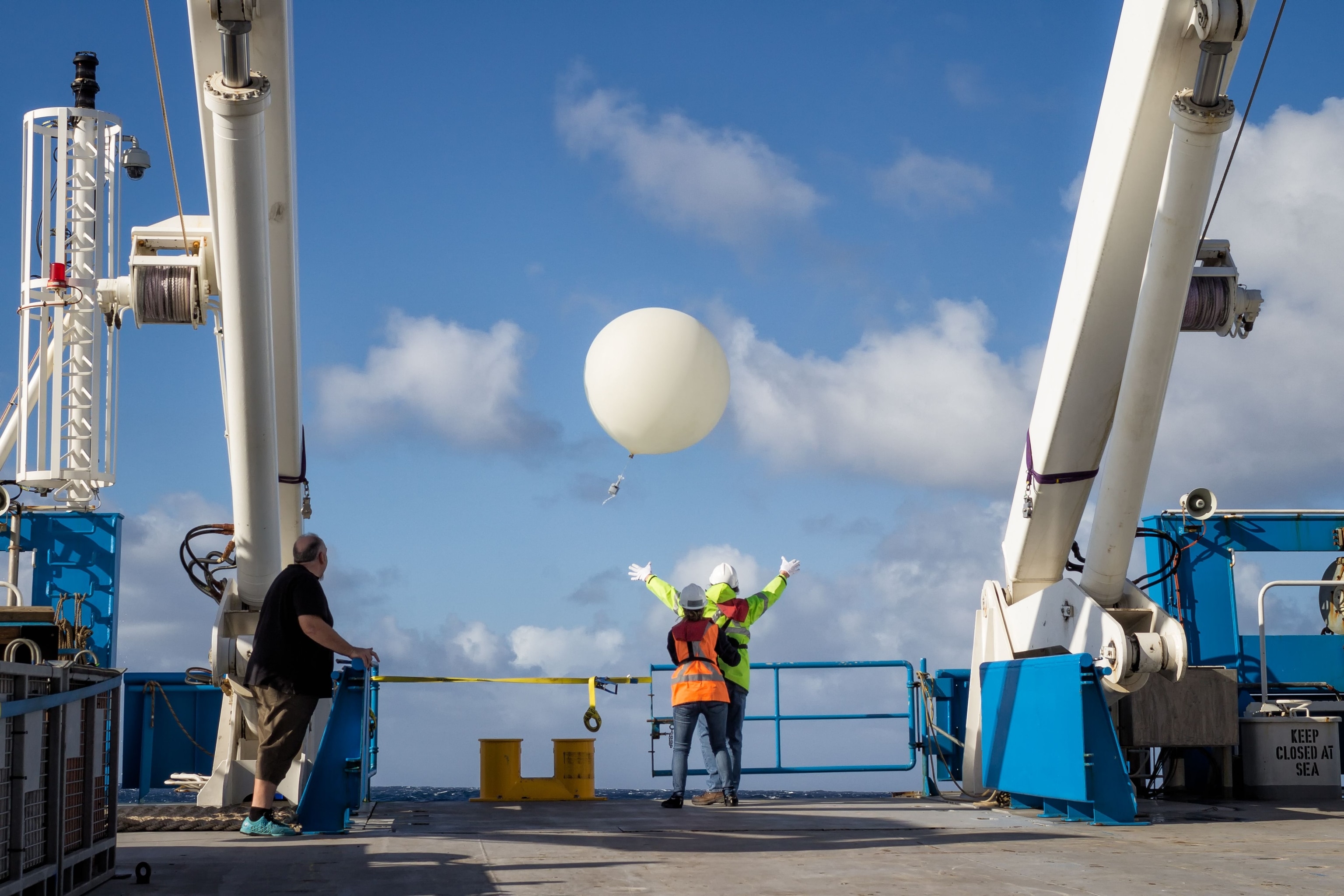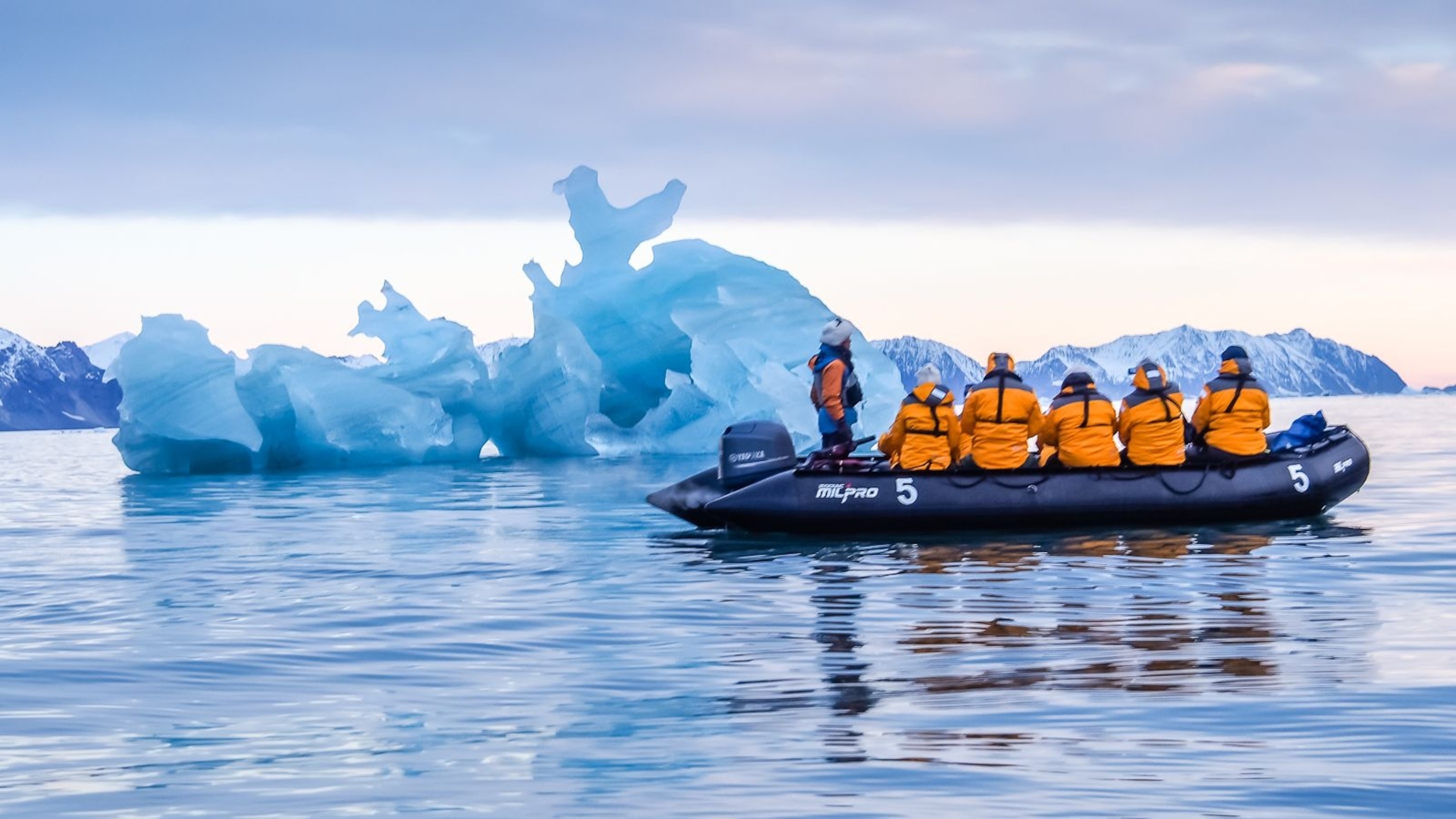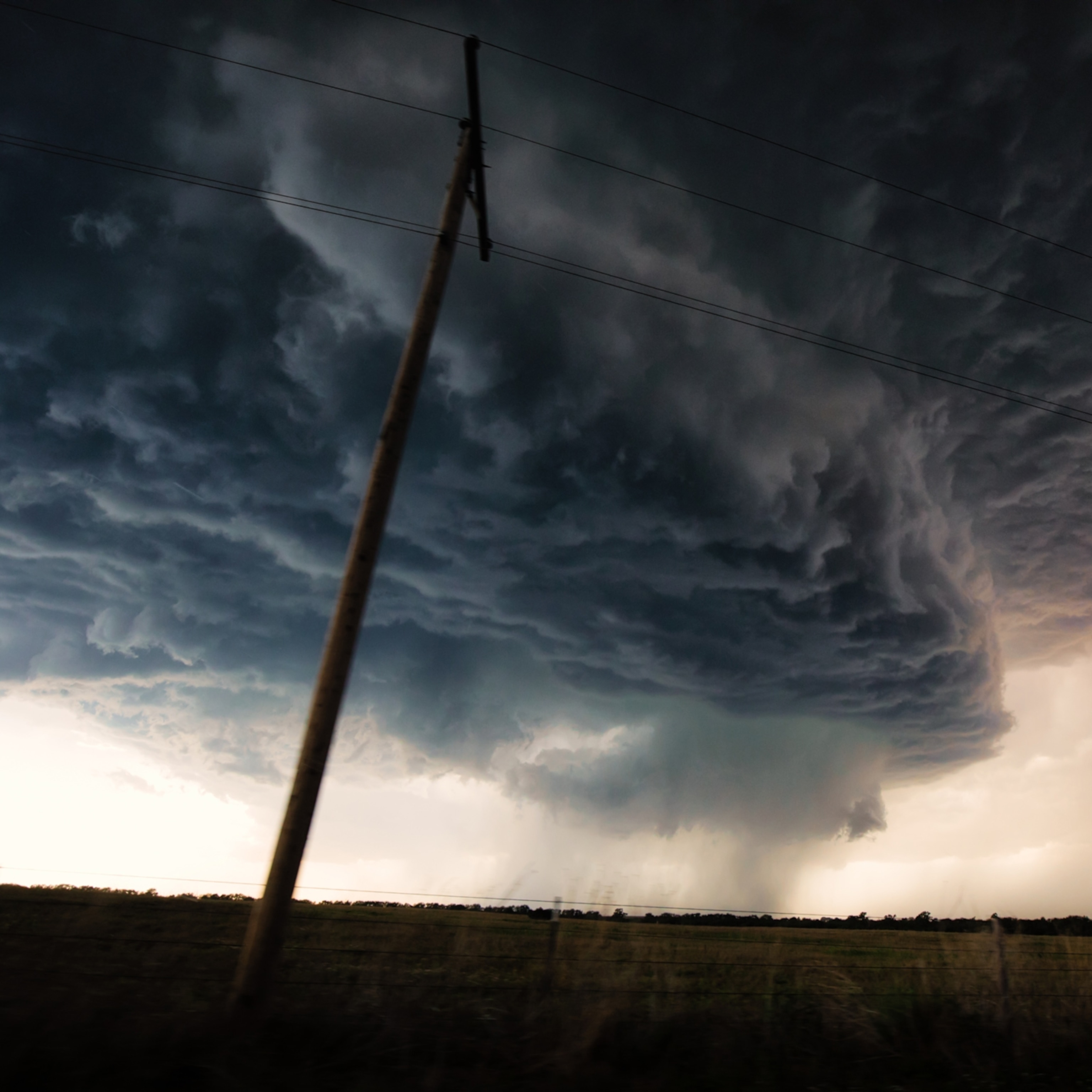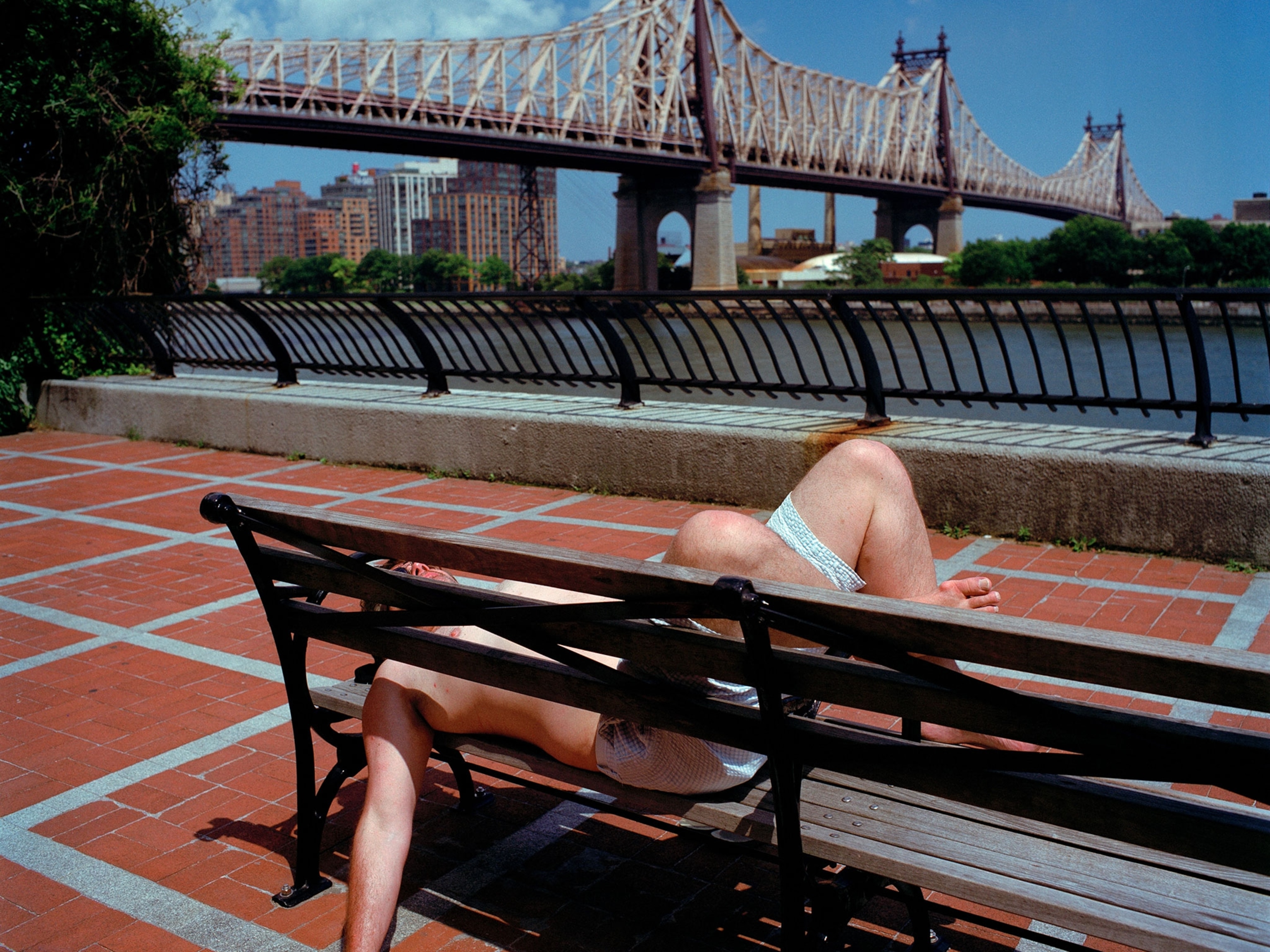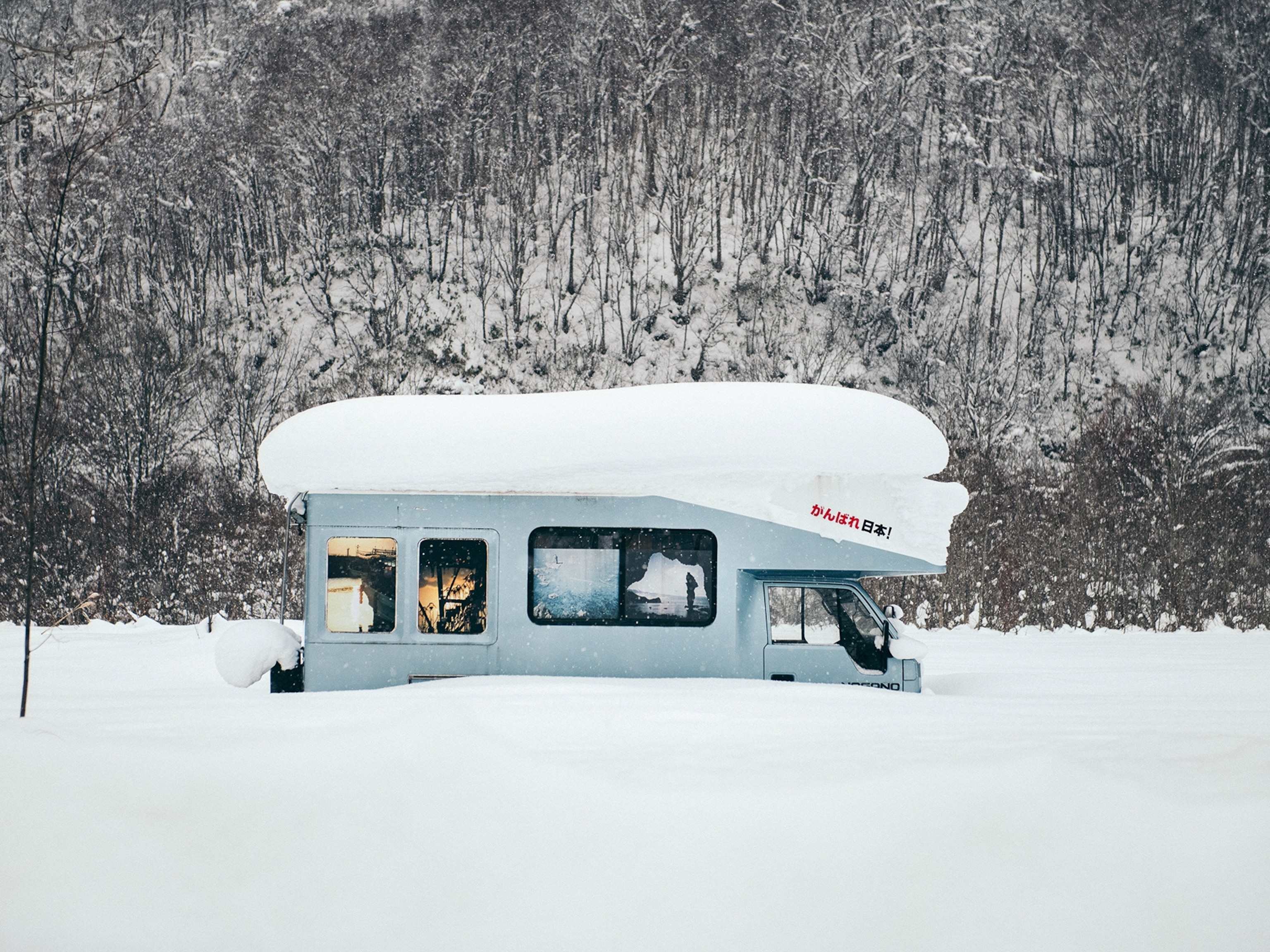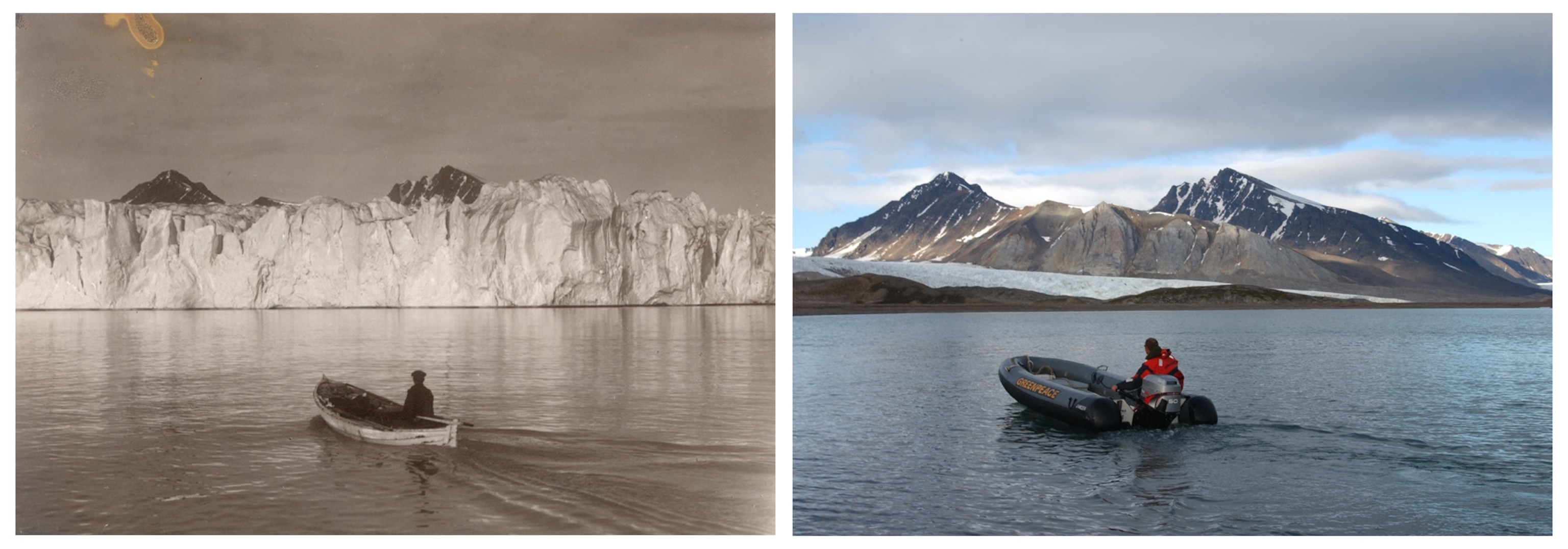
Pictures Show Climate Change's Dramatic Arctic Impact
A photographer’s work with Greenpeace has given him a front-row seat to twenty years of drastic change.
The breathtaking, alien landscapes of the Arctic have always captivated the human imagination—it was long a world beyond the borders of the known world, full of portent and mystery. Now the ultima thule of medieval geographies becomes more charted each year, and lone expeditions of pole-hungry explorers have been replaced by tourists, researchers, and fuel industry prospectors. (Watch whales surface and the Northern Lights dance in pristinely beautiful Norway.)
Though photography has taken him around the world, 42-year-old Christian Åslund has spent most of his life in the Arctic, documenting these very changes. The Swedish photojournalist, who has collaborated with Greenpeace for nearly twenty years, reached out from Stockholm to talk with National Geographic about photography, seismic blasting, and the importance of making things known. (Meet another Your Shot photographer taking a stand against climate change.)
What’s the most remarkable assignment you’ve done for Greenpeace?
It's got to be the glacier comparison that we did [at Svalbard] because it's interesting on so many levels—our access to the archives there from the early 1900s, and then being able to trace where the photographers were, because we didn't know exactly where they shot from. We had to track down where the photos were taken, and then go on location and then sort of follow their footsteps.
It's been quite a few years. I shot this in 2003. Knowledge of climate change wasn't as common, our attitudes towards climate change were different. Now more or less everyone knows it's a fact. It'd be interesting to go back and shoot from the exact same locations again. (Meet a man watching a glacier melt before his eyes.)
Did your work with Greenpeace spark your interest in documenting the effects of climate change?
Yes and no. I was living in Tromsø, Norway, quite a bit above the Arctic Circle, so climate’s a part of that. I've been up to Svalbard a couple of times. I was already working with that before Greenpeace. I'm a freelancer but I've worked a lot with Greenpeace, since 1998, shooting both video and film photography for them on various contracts. I've done a lot of climate-related work, up in the Arctic. But then, of course, when I got to being on assignments with them, it got to be on another level.
What's happening in the Arctic is spreading around the whole globe. I have also been visiting countries directly affected by climate change—floods, natural disasters, and drought. It is the biggest challenge we face and we must act now before it’s too late.
In Kiribati last summer, we got to meet the country’s president. He knows climate change is just a fact...they're buying up land in Fiji so they can evacuate in the future. So you can definitely see its effects in places like that.
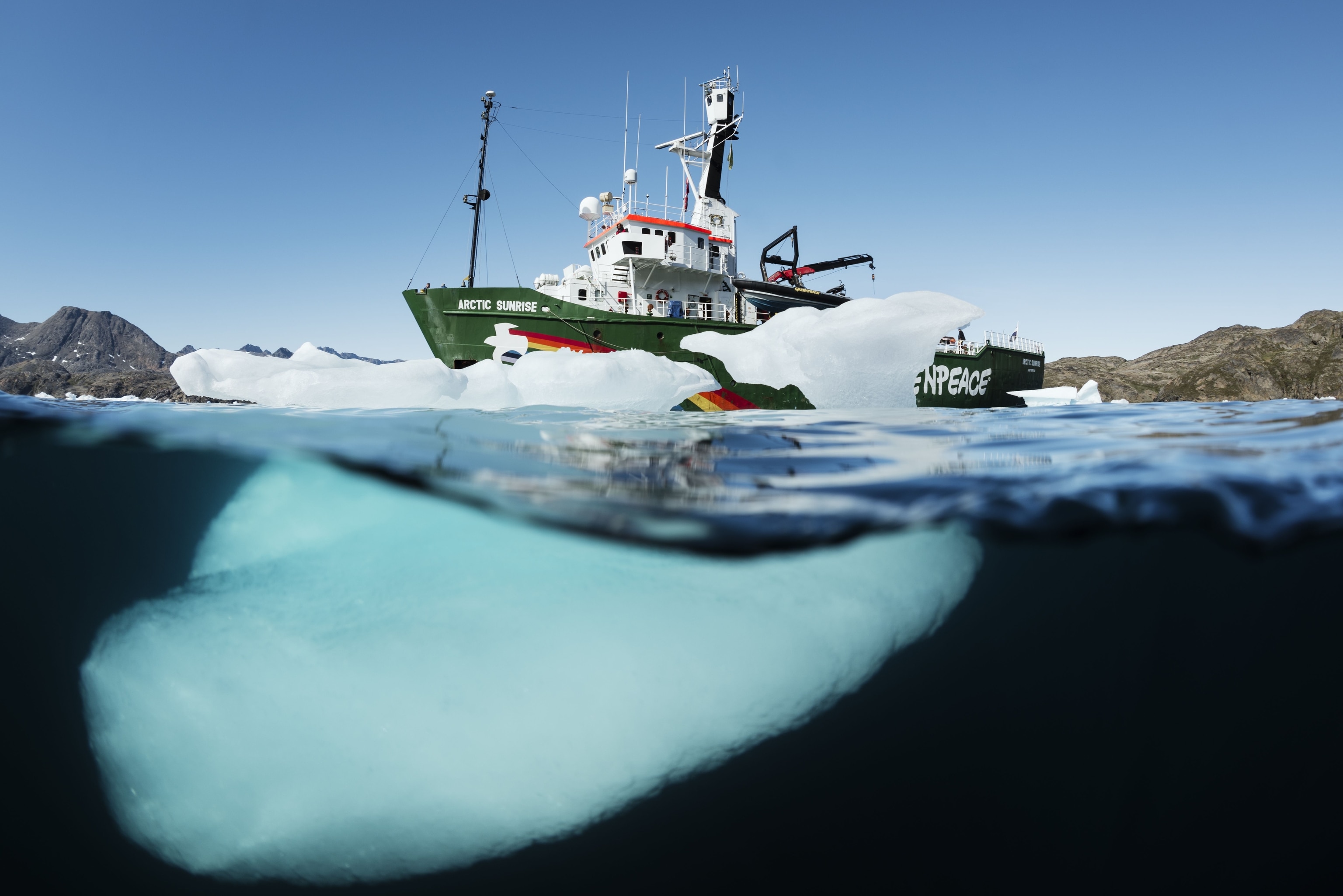
How did this picture come about?
This 50/50 split image of the Greenpeace vessel Arctic Sunrise was taken while on assignment for Greenpeace Nordic when I was doing a feature story about seismic testing operations for prospecting new gas and oil reserves around Greenland. This picture was not planned. I saw that we were anchored near some smaller icebergs and I wanted to try to capture our vessel and the ice underwater in the same frame. Luckily I had brought the underwater housing with me to Greenland, mainly to try to document the actual blasting from the sound cannons they use during the seismic testing.
Our assignment was to try to show the impact of what they're doing, searching and investigating for fuel. It's a very expensive and dangerous operation to do and it shouldn't take place, especially not in the Arctic where you most see the impact of climate change. Global oil companies, including BP, Chevron, and Royal Dutch Shell, all own drilling rights in the Greenland Sea. They’re the likely customers for the data uncovered by the seismic testing company.
How did you become interested in photography?
My collaboration with Greenpeace started as a school project. That led to my first real assignment after I graduated.
Photography has had a tremendous impact on my life. I’m doing something I love and have the opportunity to be involved, to inform and influence people.
If you could take the perfect picture in response to the #myclimateaction challenge, what would that look like?
For me, a #myclimateaction image would be someone highlighting various measures, large and small, for a new life beyond a fossil-fuel society. (See editor’s top picks from the Your Shot challenge.)
How does climate change affect your daily life? How is it perceived in your community?
I’ve been visiting the Arctic for 20 years and have seen firsthand how climate change has affected it, with the decline of the sea ice and the retreating glaciers.
In Stockholm, it's hard to say. The choices you make on a private level—I travel a lot for my work, but privately I can turn down my consumption to have as low an impact as possible. I do think that Stockholm and Sweden are taking action and working towards more clean energy. Hopefully we can do that and lower our dependence on the fossil-fuel industry. I think that in Scandinavia we're very aware of the problem, and we're doing what we can.
What final thoughts do you want to leave with readers?
Everyone's got to be aware of the problem of climate change before anything can be done. And that is a big step.
This interview has been edited for length and clarity.
